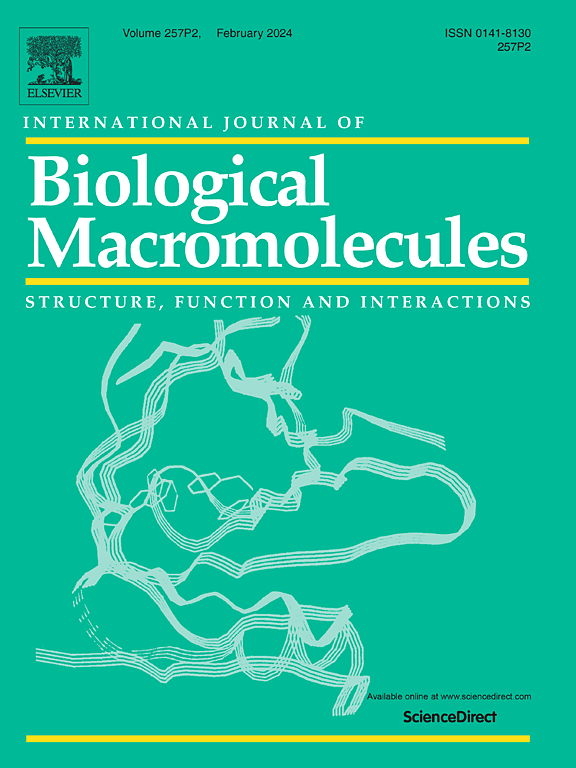Chemical synthesis of biological grafted starch with poly(N, N-dimethyl acrylamide) and poly(ethyl acrylate) structure for conferring superior paste stability, adhesion to cellulose-based cotton, film properties, and desizability
IF 7.7
1区 化学
Q1 BIOCHEMISTRY & MOLECULAR BIOLOGY
International Journal of Biological Macromolecules
Pub Date : 2025-04-01
DOI:10.1016/j.ijbiomac.2025.142719
引用次数: 0
Abstract
This study mainly aimed to reveal the superiority of the positively charged poly(N, N-dimethyl acrylamide) (PC-PDMAA)/poly(ethyl acrylate) (PEA) structure to control poly(sodium allyl sulfonate) (PSAS)/PEA structure in enhancing the sizing properties (viscosity stability, adhesion to fibers (cellulose-based cotton and hydrophobic polyester), and film properties) and desizability of starch, and avoid desizing difficulty issue of positively charged PATAC-grafted starch, due to its worse desizing efficiency. Also, it aimed to survey the influence of grafting ratio on these properties, to develop a new biobased starch adhesive, PC-PDMAA-g-starch-g-PEA (PC-PDMAA-g-S-g-PEA), for the sizing of cotton and polyester. Under a similar grafting ratio, the PC-PDMAA-g-S-g-PEA (IV) showed significantly superior bonding to both fibers, film elongation and endurance (p < 0.05), and better paste stability and desizability compared to control PSAS-g-starch-g-PEA (PSAS-g-S-g-PEA, IV#). This demonstrated that combining the PC-PDMAA/PEA branches could further enhance these properties of acid-thinned starch (ATS) compared to the PSAS/PEA branches. Bonding strengths, viscosity stability, desizability, film elongation, and film endurance of PC-PDMAA-g-S-g-PEA were strengthened with an increased grafting ratio from 0 % to 10.80 %. According to these findings, PC-PDMAA-g-S-g-PEA, a novel starch bio-based adhesive with a grafting ratio of 10.80 %, showed promise for use in cotton and polyester warp sizing.

求助全文
约1分钟内获得全文
求助全文
来源期刊
CiteScore
13.70
自引率
9.80%
发文量
2728
审稿时长
64 days
期刊介绍:
The International Journal of Biological Macromolecules is a well-established international journal dedicated to research on the chemical and biological aspects of natural macromolecules. Focusing on proteins, macromolecular carbohydrates, glycoproteins, proteoglycans, lignins, biological poly-acids, and nucleic acids, the journal presents the latest findings in molecular structure, properties, biological activities, interactions, modifications, and functional properties. Papers must offer new and novel insights, encompassing related model systems, structural conformational studies, theoretical developments, and analytical techniques. Each paper is required to primarily focus on at least one named biological macromolecule, reflected in the title, abstract, and text.

 求助内容:
求助内容: 应助结果提醒方式:
应助结果提醒方式:


